Here you can find out more about the museum’s permanent displays, our external sites, online resources and other featured objects from our collection.
Gallery One
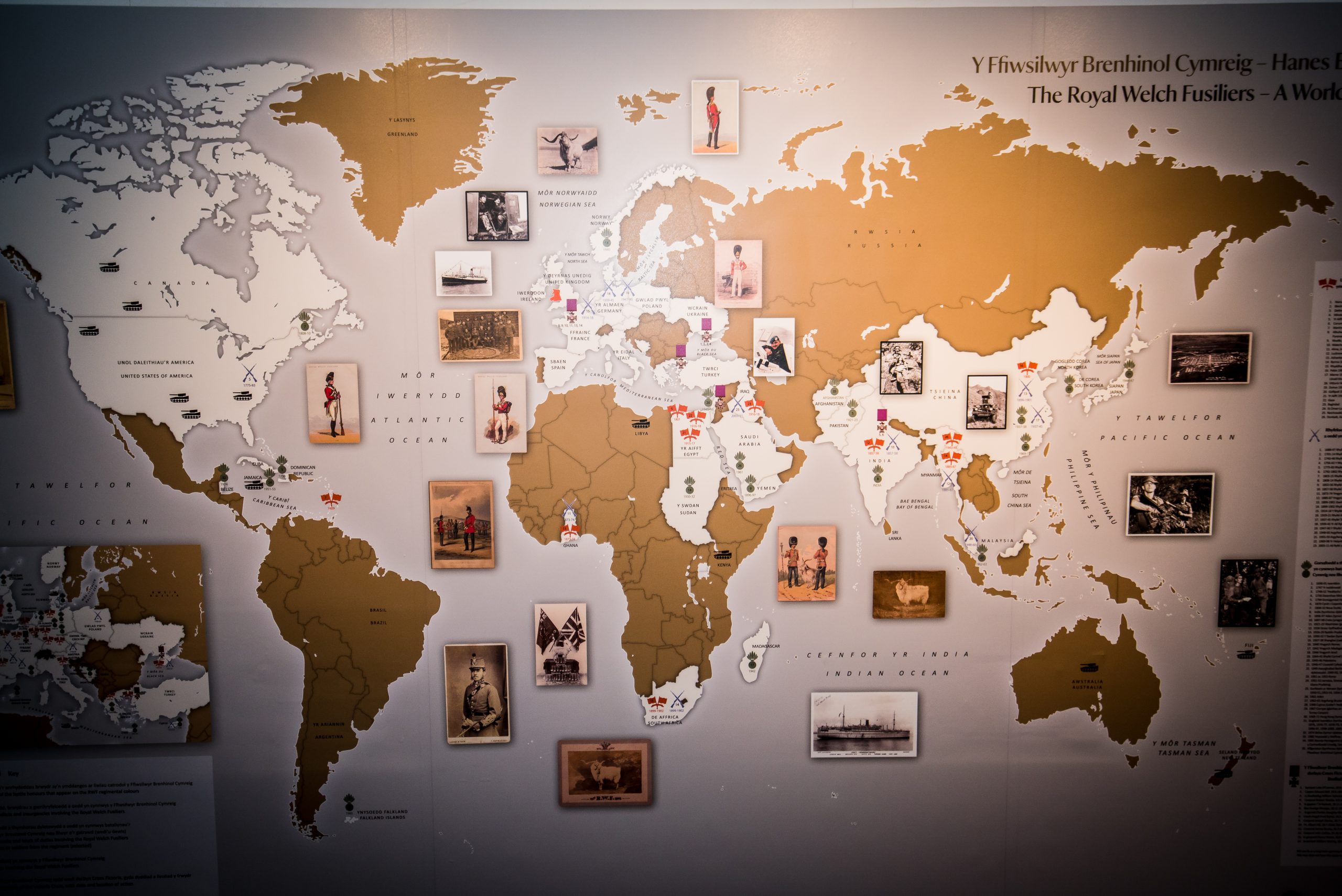
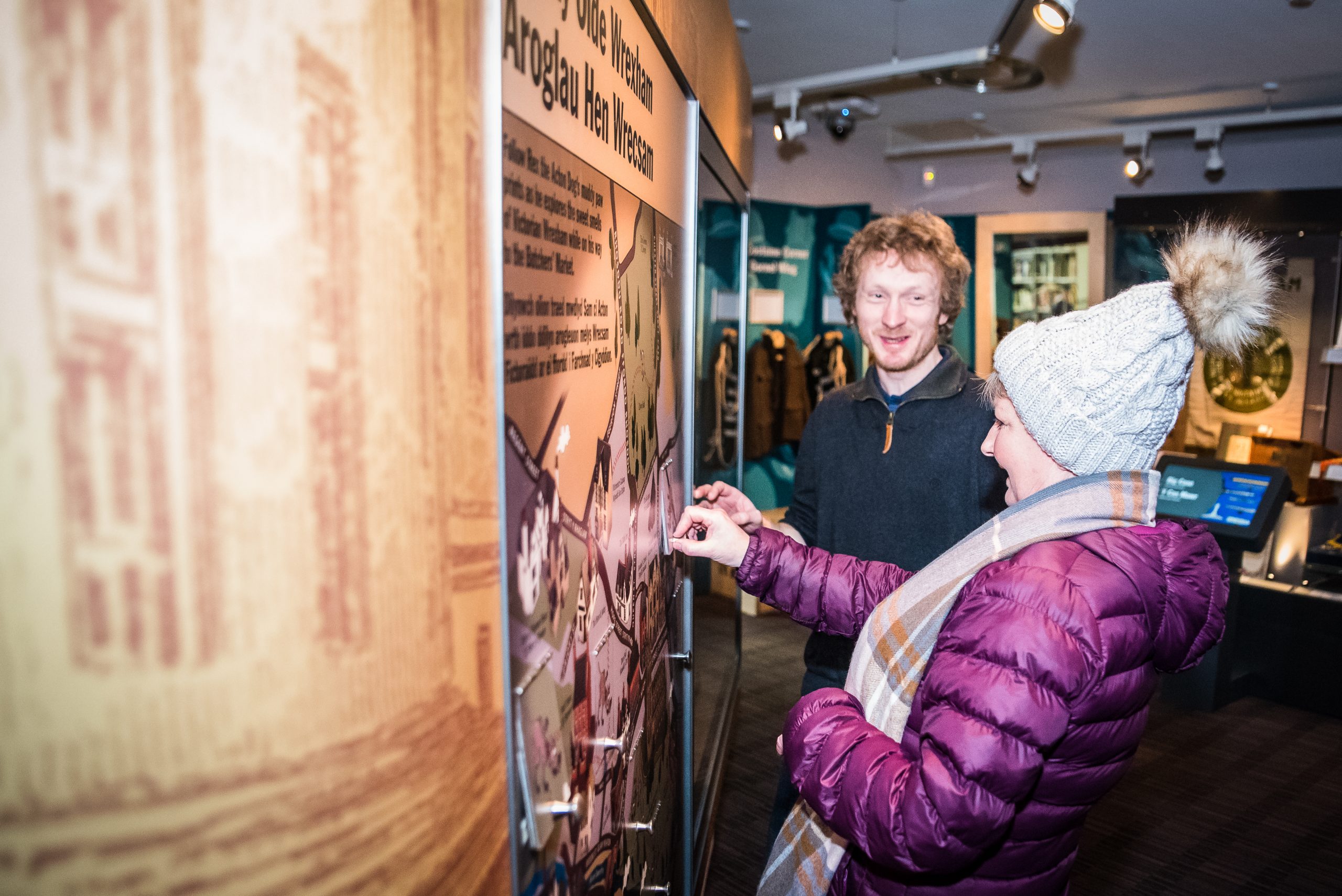
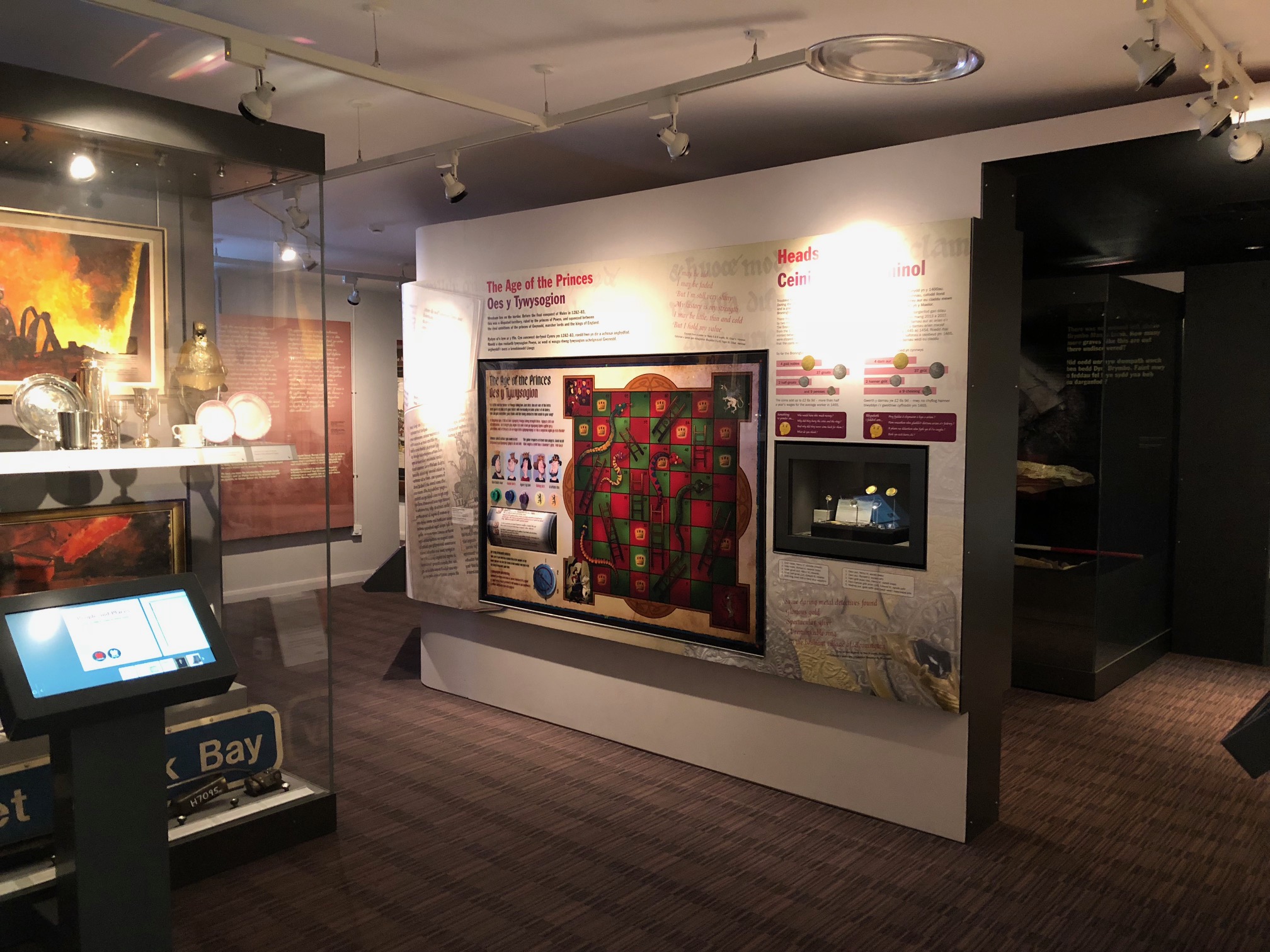
Gallery One – is the space where you can explore the museum collections and the stories they reveal of Wrexham’s past.
Enter the gallery via the Time Tunnel where you can see objects chosen and interpreted by members of the local community.
The gallery has been specially designed to appeal to the many different people the museum attracts. What will appeal to you?
Meet Brymbo Man, listen to the news of his discovery and find out how science has revealed his secrets.
See the Bronze Age Rossett Hoard and watch two specially produced films that explain how the hoard was made nearly three thousand years ago.
Try your hand at rebuilding Holt castle or listen to historic characters report from the frontline of Wrexham’s past: the conquest of Wales, the time of Owain Glyn Dŵr and the Civil War.
Sit back and relax in the Hippodrome as you watch films about Wrexham Lager, Wrexham FC and Wrexham’s mining past
Sniff out the charms of Victorian Wrexham with the help of the Acton Dog…
Our External Sites
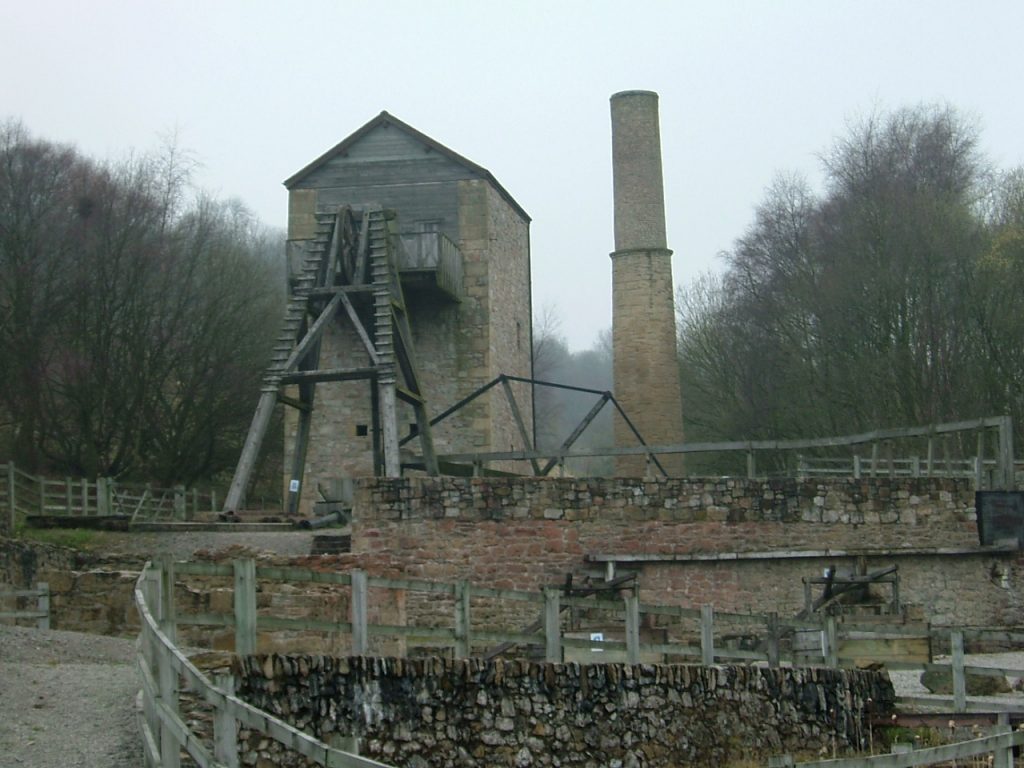
Visit Minera Lead Mines and Country Park for a fascinating glimpse into the industrial past of the beautiful Clywedog Valley
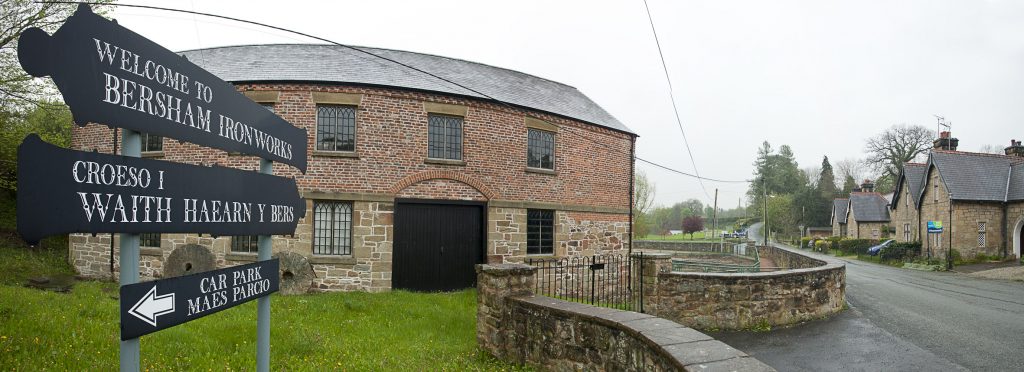
Made famous by John ‘Iron Mad’ Wilkinson, the once noisy Bersham Ironworks now nestles quietly in the attractive Clywedog Valley.
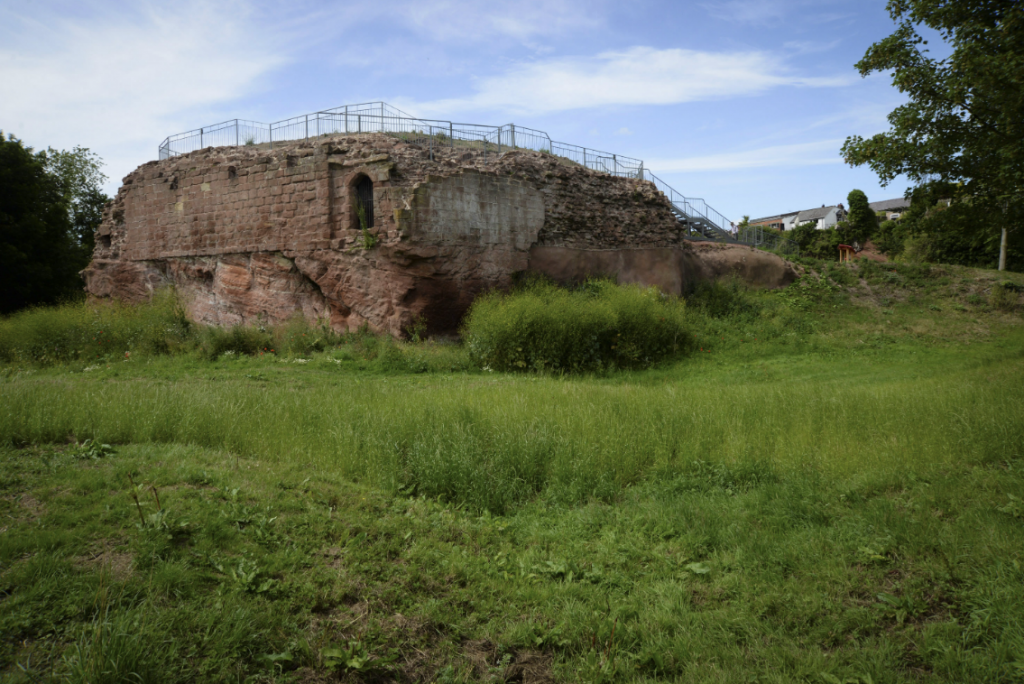
Holt Castle is situated on the banks of the River Dee on the Wales-England border, a few miles north-east of Wrexham. The castle was built between 1283 and 1311 by John de Warenne and his grandson, successive earls of Surrey, following the defeat of Llywelyn ap Gruffudd, prince of Wales.
The Rossett Lead Pig
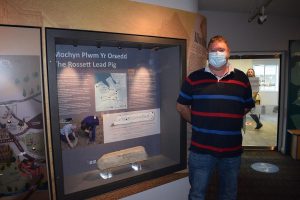
On September 21, Wrexham Museum, for the first time, put on public display the Roman lead ingot or ‘pig’ that was discovered near Rossett, north of Wrexham, last year.
The pig was discovered by local detectorist Rob Jones who immediately notified the local Finds Officer (NE Wales) for the Portable Antiquities Scheme in Wales (PAS Cymru) based at Wrexham Museum, allowing the object to be examined whilst it was still in the ground.
The pig has a fine moulded inscription which bears the name of Marcus Trebellius Maximus, the governor of the province of Britannia between 63 and 69CE, during the reign of the Emperor Nero. No other inscriptions bearing his name have ever been found in the UK, which is why it has attracted so much excitement nationally.
The extraction of lead and silver was a significant reason for the invasion of Britain under the Emperor Claudius in 43CE. We know that the Romans exploited the mineral resources of Flintshire and possibly Minera, but we don’t have clear evidence at the latter site.
An analysis of the lead that makes up the pig recently discovered near Rossett undertaken by the University of Liverpool, appears to show that it comes from a local North East Wales source.
This was expected, considering where it was found, but it’s good to get confirmation. That means that the Roman place name mentioned on the inscription Magul… is a local mining site, perhaps either Ffrith or Minera.
It also proves that the Roman authorities were mining and processing lead, and possibly silver, in this area in the pre Flavian period (before AD 69), much earlier than previously thought.
The Rossett lead pig is on show in Gallery 1
Rossett Roman Villa
In 2020 Archaeologists from Wrexham Museum, the University of Chester and Archaeological Survey West have discovered a Roman villa near Rossett, Wrexham. The villa is the first of its kind ever to be discovered in north east Wales and represents an exciting addition to our knowledge of the area during the Roman period.
The site was discovered through the cooperation of local metal detectorists who discovered Roman material at the site, this sparked a remote sensing survey which revealed clear evidence of a buried structure.
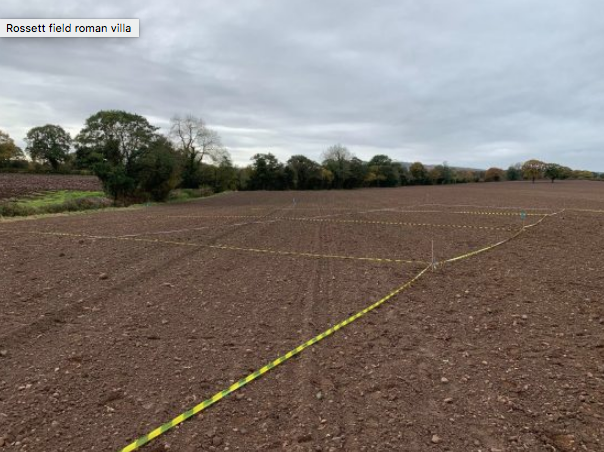
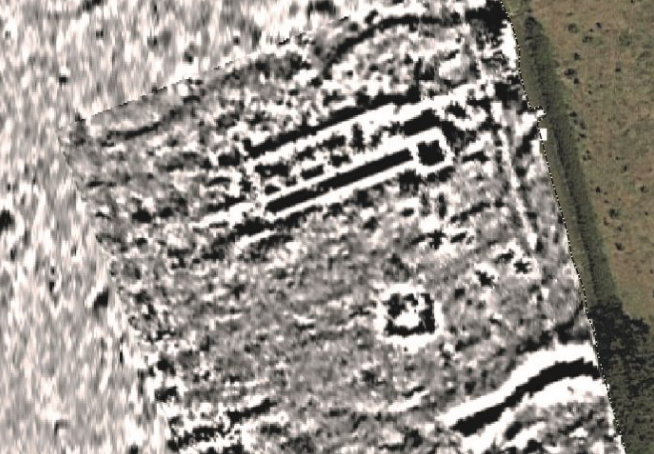
The Roman army invaded Britain in AD 43 and quickly pushed northwards and westwards across the country. The fortress at Chester was established around AD 74 and with relative peace came the establishment of a network of towns and rural settlements. Most villas were essentially farming establishments, ranging from relatively simple in design to very grand with mosaic floors, bath houses and underfloor heating systems.
In September 2021, Wrexham Museum teamed up with University of Chester to excavate the site.
The project was made possible thanks to funding from the Roman Research Trust and through the Welsh Government Rural Communities – Rural Development Programme 2014-2020, which is funded by the European Agricultural Fund for Rural Development and the Welsh Government.
The whole project was documented in a series of ‘Dig Diary’ videos.
Watch the complete Roman Rossett Dig Diaries series on YouTube.
Brymbo Man
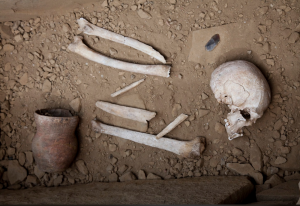
In August 1958 local workmen including Ron Pritchard were digging a pipe trench near No.79 Cheshire View, Brymbo, near Wrexham, when they found more than they expected: a large capstone about 1ft/30cm below the surface. They had found Brymbo Man.
When archaeologists from the National Museum of Wales arrived to investigate, they excavated a stone lined box or cist beneath the capstone. Inside the cist were the incomplete remains of a skeleton, a small earthenware pot and a flint knife.
His grave and the pot, known to archaeologists as a Beaker, date Brymbo Man to the early Bronze Age, probably about 1600BC.
Brymbo Man is on show in Gallery 1
